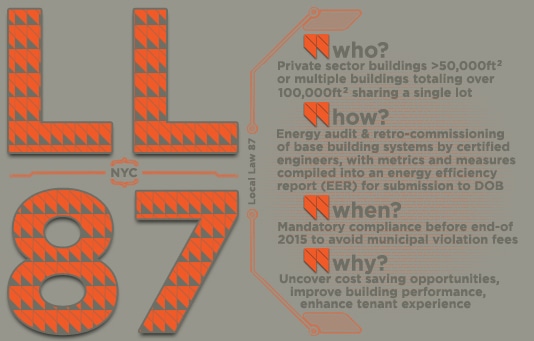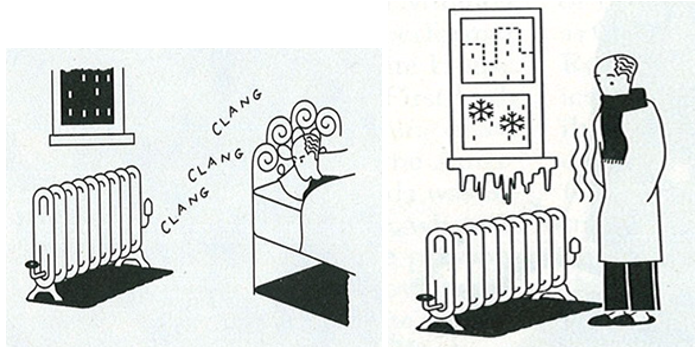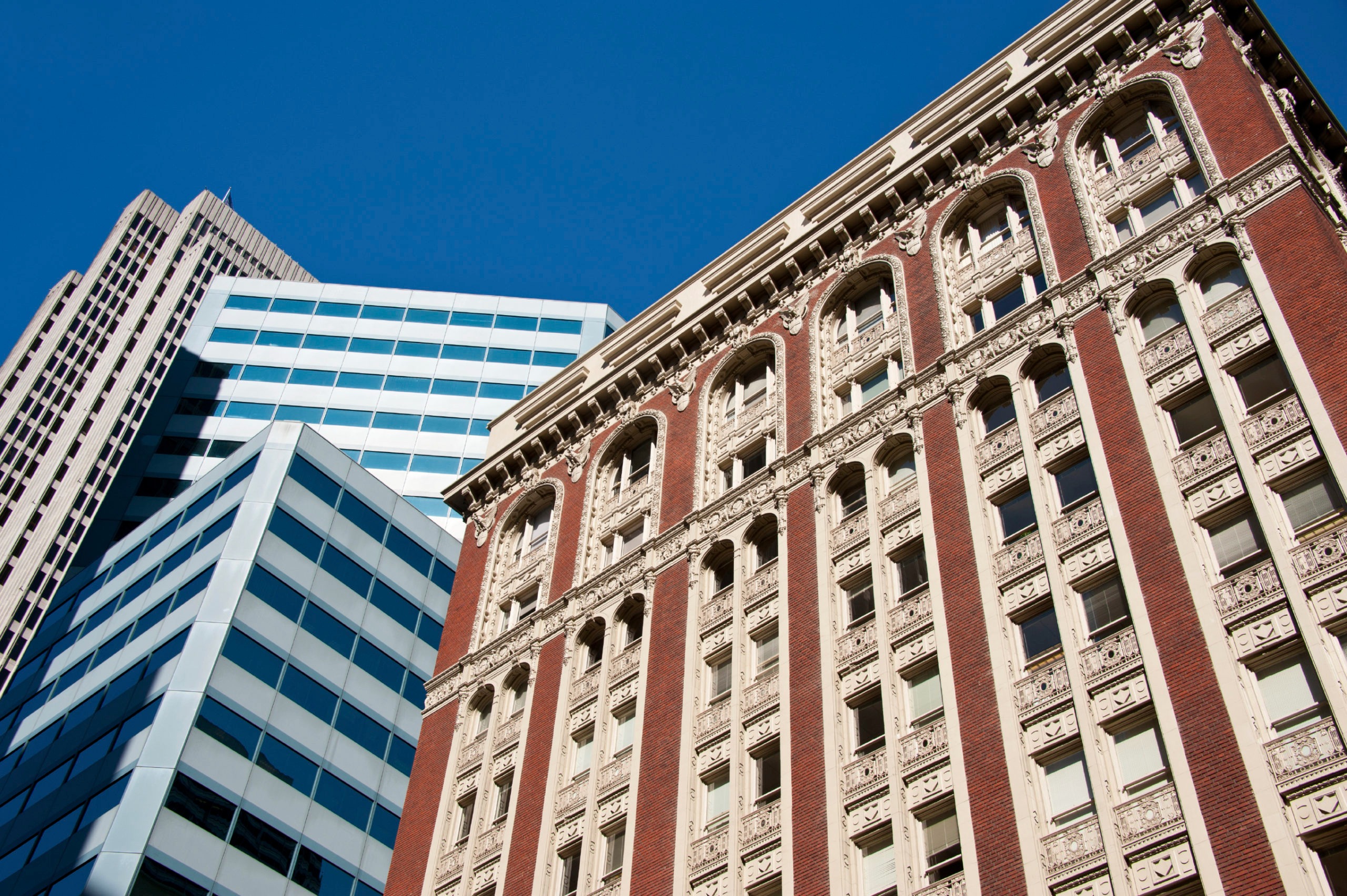
Calendar year 2015 marks the start of the third year of mandatory Local Law 87 compliance in NYC. The Law—which requires buildings over 50,000 sq ft to conduct an energy audit and retro-commissioning study once a decade—has, to date, been characterized by market uncertainty and a somewhat hesitant response from the real estate community. These conditions stem largely from an unclear expectation as to what the future will hold, and what, if any, blow back there might be for being the owner of a poor-performing building.
This lack of clarity has created a wide diversity in the approach that owners opt to take in complying with Local Law 87. A notable pool of building owners, for example, have viewed the law as a burden enacted by NYC, and have opted to take the cheapest available, low-bidder approach to compliance. A large number of newly formed energy consulting firms have popped up to provide “cheapest-in-class” services, this despite the fact that many of these startup firms lack the qualifications and experience necessary to actually perform a compliant Local Law 87 project. As is almost always the case, you get what you pay for. On the other hand, a different set of building owners have viewed the law as an opportunity to improve the performance of their buildings by engaging the service of discerning engineering service providers. These owners see the value in having a 3rd party vet the operation of their buildings, as they realize that operational cost savings drop straight to the bottom line, driving improved NOI, increased asset value, while guarding against the risk of future volatility in the commodity markets.
The real estate community has, by and large, accepted Local Law 87 as a fact of life, but the lack of a clearly demonstrated vision of future goals has created a deeply fragmented understanding of how the Local Law 87 process can and will impact a building’s operation. Signs, though, are pointing toward a clarification of what this process will require into the future, and there is reason to believe that the lay of the land will be quite different in years to come. For starters, the DeBlasio administration, in the fall of 2014, issued their One City Built to Last plan. This ambitious plan provides a policy framework for achieving 80% emissions reductions in NYC by 2050—no small task, to be sure. The aggressive nature of the plan requires that the city dig deep into the performance of the built environment in order to achieve these reduction targets, as buildings account for about 70% of NYC emissions. The DeBlasio administration has taken a “carrots and sticks” approach toward compelling change and ensuring adherence to their agenda: state and local incentives have been dangled in front of the real estate community to encourage proactive adoption of energy conservation practices by building owners, while the not-so-thinly-veiled threat of future mandates loom on the horizon for those actors that fail to take appropriate action. As DeBlasio was quoted in a September Real Estate Weekly article, “For private buildings, we’ll set ambitious targets for voluntary reductions, but if steady progress is not made, we will issue clear mandates,ˮ said deBlasio, adding, “Our long-term goal is bolder still — charting a path to a full transition from fossil fuels.” Again…not so thinly veiled.
Notable carrots include limited time incentive programs, such as the Demand Management Program offered jointly by NYSERDA and ConEd, and the forthcoming establishment of a retrofit accelerator program, which will scrub Local Law 84 (benchmarking) and 87 data to facilitate engagement between key stakeholders as the City attempts to play matchmaker in a Love Connection style game of emission reduction through market transformation. Many in the real estate and sustainability arenas see great promise and opportunity in these models.
Love it or hate it, the real estate community and others need to acknowledge that the landscape is changing, and the vision of the future—at least as how Mayor DeBlasio sees it—is taking shape.
Early adopters of emissions reduction practices—e.g., buildings that participate in voluntary programs such as the Mayor’s Carbon Challenge and those that take a more rigorous approach to the Local Law 87 process—stand a better chance of avoiding the “heavy hand of government” that DeBlasio so publicly campaigned on. And they might even get to munch on a few carrots along the way.





